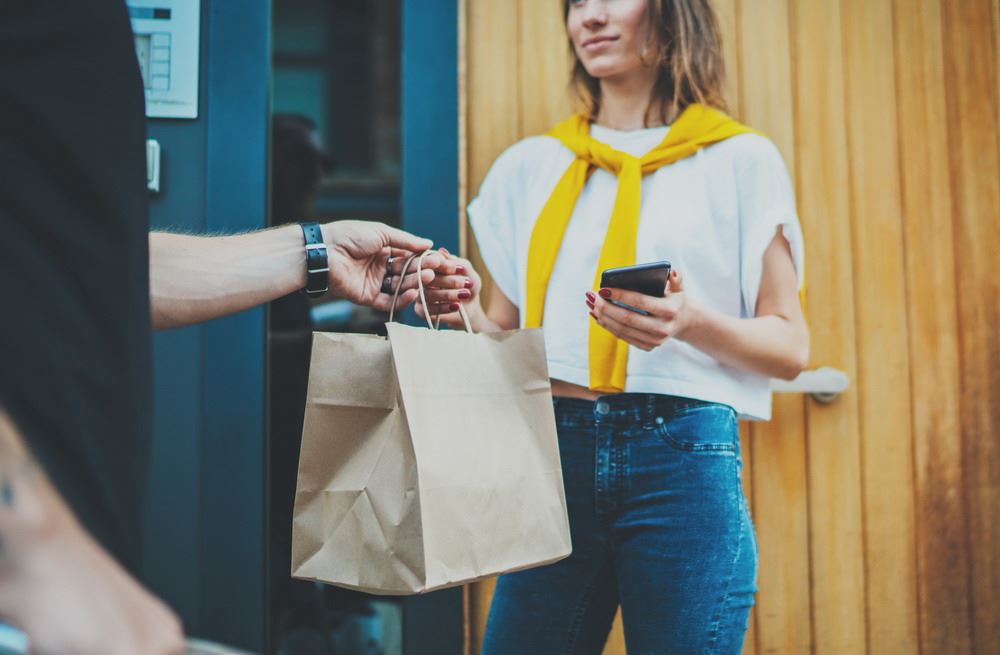
Photo courtesy of Culture Bully
QSR Magazine, centered around news on the limited-service restaurant segment, partnered with Rabobank, a multinational banking and financial services company, to evaluate what the future of delivery looks like in the post-pandemic world. Here are their most important findings.
Rabobank has found that, in the U.S., “delivery’s share of foodservice sales doubled to more than 15%,” and predicts that the sector will see increased growth in 2022/2023 with “sales sticking 40 to 80 percent above 2019 figures in nearly every major market.” The pandemic climate has certainly created an environment (more than) favorable for delivery services. The lack of dine-in, and the reduction or closure of restaurant operations, created a less-saturated field in which customers and businesses had no other choice but to turn to delivery services. According to Datassential’s Firefly platform, “90 percent of customers said they changed delivery behavior as a result of COVID and “limited-service segments offering delivery increased by almost 50%.” Digital orders through restaurants reportedly “ballooned 124% in the year ending March 2021 compared to the prior year,” as found by The NPD Group. Within this scope, digital orders specifically for delivery through restaurants increased 140%, and through third-party apps by 207%. Aside from the numbers, Rabobank found that not only did aggregators see major growth in the past year, with companies such as Grubhub seeing gross food sales and average orders rising exponentially, but so did online, delivery-focused brands, such as ghost kitchens and virtual food halls.
We are now at a potential crossroads, however. The real question is whether the end of the pandemic will see sustained, incremental growth of delivery sales, or whether it won’t last?
Many think that delivery’s gains made in 2020 already will not be replicated to the same extent in 2021. This being said, in the U.S., “2021 delivery sales are expected to decline double-digits but still remain nearly 50% above 2019 levels, and grow far in excess of overall foodservice sales over the next several years. Exorbitant sales may subside, but they will still be much higher than they have been anytime in the past. Convenience is the true reason for this. Although dine-in will continue to keep restaurants afloat, as the experience factor remains desirable, delivery will continue to be the next-best-option for foodservice simply based on how convenient it is; additionally, according to Rabobank, “the economics for take-away and drive-thru win out for restaurants as well, and efforts to foster them will balance the future.”
But will incremental growth persist? Rabobank thinks not, thanks to 3 trends that have been recorded during this pandemic period.
1) Food Delivery Will Not Substitute Meals From Supermarkets
Although food delivery may be the next-best-option, it will not overtake cooking meals at home or buying ready-made meals from supermarkets unless delivered meals can drop to comparable levels. According to Rabobank, “foodservice is more likely to remain a zero-sum game with delivery largely taking share from other channels rather than generating substantial incremental sales.”
2) Technology Did Not Materially Change Long-term Growth Trajectories
Although tech retail sales certainly became more popular during the pandemic, especially with regards to Amazon and its food services, it did not impact the overall retail sales growth trajectory as much as perceived. According to Rabobank, “U.S. retail figures posted a 3.3% CAGR during this period, which is largely in line with the 3.8% CAGR that was recorded over the 2010–2015 window.”
3) Foodservice Sales Remain More Tightly Correlated with the Macroeconomic Environment
The macroeconomic environment cited here particularly references disposable income, GDP growth, and unemployment trend. According to Rabobank, “domestic foodservice consumption revealed a nearly +74%correlation with per capita personal consumption expenditure over the past 25 years, including less than 90% correlation during recessionary stretches.”
As such, the future looks quite promising for both restaurants and delivery, in their own ways. For businesses who center around consumer experience and personal connection, delivery will only constitute a marginal part of their business – much less than it has throughout the pandemic. This being said, the demand for delivery services will still remain strong as long as convenience is valued. Restaurants will still be facing a population that has relied on delivery to ease their life for months now, and delivery will continue to draw consumers to its services as long as it can capitalize on this preference. Additionally, virtual concepts like ghost kitchens will only continue to grow as certain benefits, such as low labor costs and barriers to entry, keep them attractive; according to a survey conducted by Dataessential last year, “35% of guests said they had virtual brand awareness and 23% had already ordered from one. By March of this year, it was 50 and 34%, respectively.”
In any case, the pandemic altered the foodservice demand model to give delivery a substantial stake in the game. “Going back to normal” is no longer an option.
Founded by attorneys Andreas Koutsoudakis and Michael Iakovou, KI Legal focuses on guiding companies and businesses throughout the entire legal spectrum as it relates to their business including day-to-day operations and compliance, litigation and transactional matters.
Connect with Andreas Koutsoudakis on LinkedIn.
Connect with Michael Iakovou on LinkedIn.
This information is the most up to date news available as of the date posted. Please be advised that any information posted on the KI Legal Blog or Social Channels is being supplied for informational purposes only and is subject to change at any time. For more information, and clarity surrounding your individual organization or current situation, contact a member of the KI Legal team, or fill out a new client intake form.
The post The Future of Delivery in a Post-Pandemic World appeared first on KI Legal.
